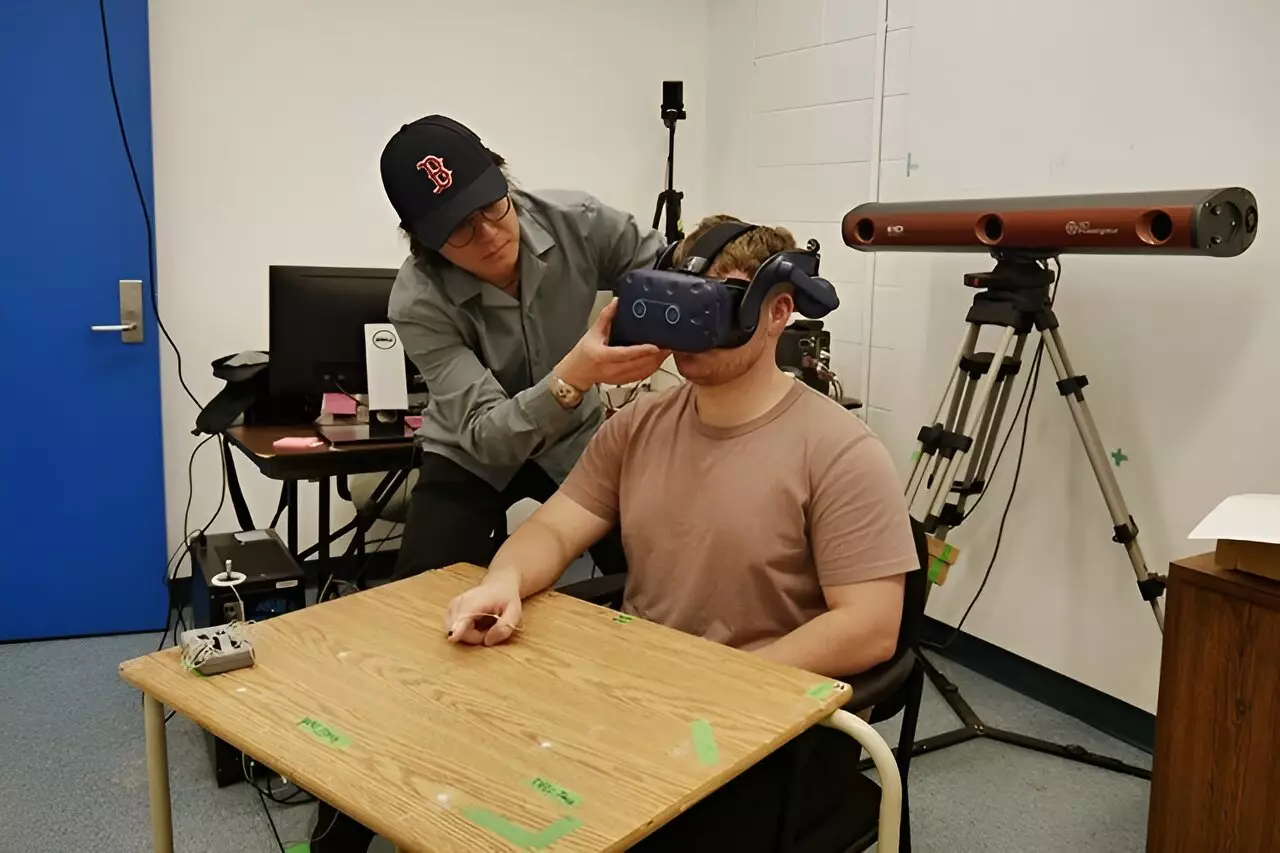In a recent study conducted by researchers at the University of Toronto, it was discovered that the use of virtual and augmented reality (VR and AR) technologies can have a temporary effect on how individuals perceive and interact with the physical world. This finding has significant implications for various industries that utilize these technologies for training purposes. The study, published in Scientific Reports, revealed that individuals exhibited different movement patterns in VR and AR, leading to errors in real-world movements immediately following the use of these technologies.
The study found that individuals who used VR tended to undershoot their targets, while those who used AR tended to overshoot their targets. This discrepancy in movement accuracy highlighted the impact of using digital environments on real-world physical tasks. Interestingly, the researchers noted that the effects of AR on movement accuracy wore off more quickly compared to VR. This difference was attributed to the fact that individuals using AR could still see their actual surroundings, aiding them in maintaining a more accurate sense of depth and distance.
Challenges in Skill Transfer
The researchers were surprised by two key findings: the transfer of movement patterns from VR and AR to real-world actions, and the varying speed at which individuals readjusted to real-world conditions after using VR and AR. Understanding these challenges is critical, especially as industries and training programs increasingly adopt VR and AR for skill development. For professions such as surgeons, pilots, and even everyday tasks like driving, the ability to transfer skills learned in a virtual environment to real-world scenarios is crucial.
As VR and AR technologies continue to advance, it is essential to grasp their effects on real-world performance. Recognizing the limitations and impact of these technologies can help ensure their effective and safe utilization in various training programs. The researchers emphasized the need to explore how different types of VR and AR experiences, varying training durations, and individual differences influence adaptation and readjustment to real-world conditions. This insight will aid in designing VR and AR systems that optimize training outcomes while minimizing negative after-effects.
Moving forward, the researchers plan to investigate how more complex and immersive VR and AR scenarios influence real-world performance. Additionally, they aim to explore the role of individual factors such as prior experience with these technologies in adaptation and readjustment processes. By delving deeper into these areas, the research team hopes to enhance the design of VR and AR systems, maximizing their potential for training and skill development.
The study underscores the importance of understanding the impact of VR and AR on real-world performance. By shedding light on how these technologies influence movement accuracy and skill transfer, researchers can pave the way for more effective and safe integration of VR and AR in training programs across various industries. Through continued research and exploration, the potential of VR and AR for enhancing skill development while minimizing adverse effects can be fully realized.

